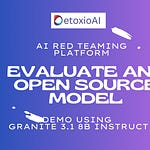The field of artificial intelligence has seen a rapid evolution in recent years, especially with the emergence of autonomous AI agents. What started as simple natural language processing models has now transformed into intelligent systems capable of reasoning, planning, and acting independently across complex tasks. This blog explores the key milestones and trends that have shaped the development of AI agents.
Phase 1: The Rise of Language Models (2019-2021)
The foundations for AI agents were laid with the development of transformer-based models such as GPT-2, BERT, and T5. These models demonstrated impressive capabilities in generating and understanding human language. However, they lacked autonomy. They were reactive tools, producing responses based solely on prompts without context memory or task execution capabilities.
Phase 2: The Copilot Era (2021-2022)
The launch of GitHub Copilot marked a major shift. By integrating LLMs with developer tools, Copilot acted as a real-time assistant for coding tasks. This era introduced the idea of agents as productivity boosters. These copilots could suggest, generate, and even refactor code, showcasing early signs of contextual understanding and collaboration with users.
Phase 3: ReAct and Planning Frameworks (2022-2023)
In 2022, frameworks like ReAct (Reasoning + Acting) emerged, enabling agents to reason about their actions. Instead of relying solely on pre-trained knowledge, these agents could perform iterative decision-making. This period saw the rise of tool-using agents that could search the web, call APIs, and reflect on outcomes to choose next steps.
Phase 4: Autonomous Agents and Tool Integration (2023-2024)
The next phase brought true autonomy. Tools like LangChain, AutoGPT, and LangGraph provided the infrastructure for agents to chain multiple steps together, maintain memory, and integrate with external tools. These agents could handle complex tasks like document analysis, research, and basic project execution. They demonstrated:
Long-term and working memory usage
Orchestration of sub-agents (planner, executor, researcher)
Use of structured and unstructured data
Phase 5: Reasoning Agents and Industrial Applications (2024-2025)
In 2024, reasoning-focused models like DeepSeek, O1, and GPT-4 Turbo enabled agents to handle ambiguity, adapt strategies, and perform advanced planning. Applications expanded into cybersecurity (e.g., PentAGI), marketing, HR automation, and even adversarial tasks like jailbreak testing. Enterprise platforms like Crew.ai and Microsoft AutoGen made agent deployment accessible without deep coding skills.
Two key protocols also emerged:
MCP (Model Context Protocol): Standardizes tool integration with LLMs
A2A (Agent-to-Agent): Enables agent collaboration across networks, hinting at an Internet of Agents
Challenges and the Road Ahead
Despite impressive progress, AI agents face challenges:
Prone to errors without sufficient pruning
Context limitations
Security vulnerabilities
Need for human oversight in critical applications
However, with advances in reasoning models, improved tool interfaces, and growing standardization, AI agents are poised to become reliable digital coworkers. As organizations embrace these systems, the focus will shift to robust testing, compliance, and ethical use.
Conclusion
From reactive language models to proactive multi-agent systems, AI agents have come a long way. Their evolution continues to redefine the boundaries of what intelligent systems can achieve. As we look ahead, the promise of AI agents lies not just in automation but in augmenting human capabilities and enabling new forms of collaboration across domains.
References & Further Reading
In our earlier article, we introduced AI agents from an engineering perspective: Demystifying AI Agents for Engineering
For more in-depth exploration:










